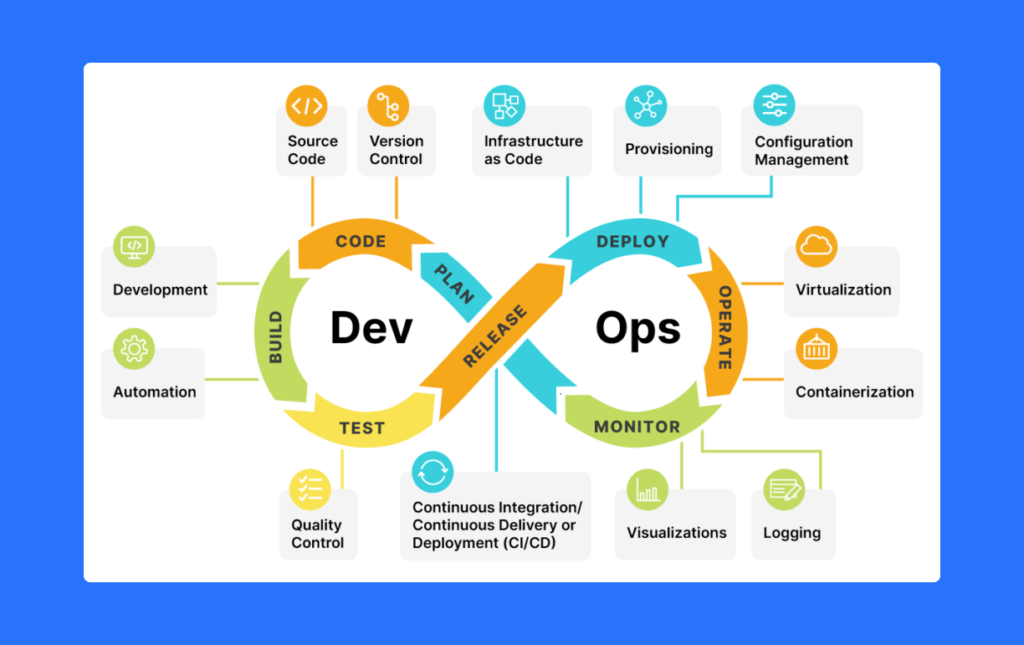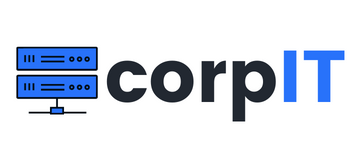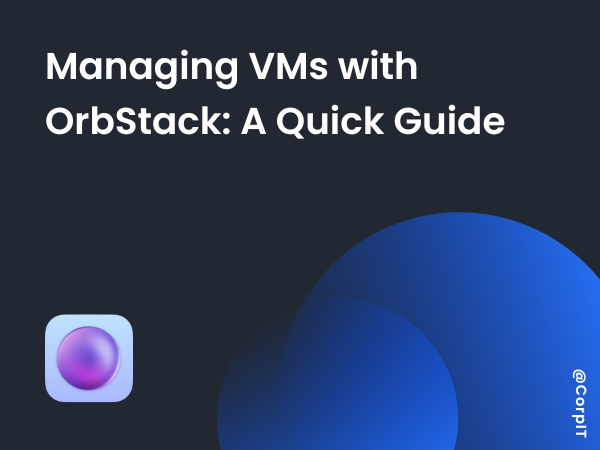DevOps automation is a method of streamlining software development by automating repetitive tasks and processes. It is a crucial aspect of modern software development, allowing teams to build, test, and deploy software faster and more efficiently. At its core, DevOps automation is about eliminating manual processes and replacing them with automated ones, which not only saves time and resources but also reduces the risk of errors and improves overall quality. In this article, we will explore what DevOps is, the key principles of DevOps automation, and its benefits in modern software development.
Table of Contents
What is DevOps?
DevOps is a software development methodology that combines software development practices and IT operations. It is a cultural and technical approach that focuses on collaboration, communication, and automation to improve the speed and reliability of software releases. DevOps aims to bring development and operations teams together to work towards a common goal of delivering high-quality software in a fast and efficient manner.

Key principles of DevOps:
- Continuous Integration: Regularly integrating code changes into a shared repository, to detect and fix errors early.
- Continuous Delivery: Automating the process of building, testing, and deploying software, to speed up the delivery of new features.
- Infrastructure as Code: Managing and provisioning infrastructure using code, to make it easier to automate and manage.
- Monitoring and Observability: Continuously monitoring the performance and behavior of software, to quickly identify and resolve issues.
- Collaboration and Communication: Fostering a culture of collaboration and communication across development and operations teams.
Benefits of implementing DevOps in software development:
- Faster software delivery: DevOps enables teams to release software faster by automating repetitive tasks and processes.
- Improved quality: DevOps practices such as continuous integration and testing help to detect and fix errors early, improving the overall quality of software.
- Increased agility: DevOps enables teams to quickly respond to changing business requirements and customer needs.
- Better collaboration and communication: DevOps promotes a culture of collaboration and communication across development and operations teams, leading to better alignment and improved productivity.
- Increased security: DevOps
- practices such as infrastructure as code and monitoring help to improve security by automating security controls and identifying potential vulnerabilities.
Automation in DevOps
Automation is a core principle of DevOps, and it is used to streamline software development by automating repetitive tasks and processes. Automation enables teams to build, test, and deploy software faster and more efficiently, while also reducing the risk of errors. It allows teams to focus on more high-value activities such as innovation and problem-solving. Automation in DevOps can be applied to various stages of the software development lifecycle, including build and test, deployment, and infrastructure management.
Types of automation used in DevOps:
- Build and Test Automation: Automating the process of building and testing software, including compiling, linking, and unit testing.
- Deployment Automation: Automating the process of deploying software to different environments, including staging, testing, and production.
- Infrastructure Automation: Automating the provisioning and management of infrastructure, including servers, storage, and network resources.
- Monitoring and Observability Automation: Automating the collection, processing, and analysis of performance and log data, to quickly identify and resolve issues.
- Security Automation: Automating security controls, such as vulnerability scanning and incident response.
Importance of automation in DevOps:
- Faster software delivery: Automation enables teams to release software faster by eliminating manual processes and reducing the time required for build, test, and deployment.
- Improved quality: Automation helps to detect and fix errors early, improving the overall quality of software.
- Increased efficiency: Automation reduces the need for manual intervention, freeing up teams to focus on more high-value activities.
- Reduced risk: Automation helps to reduce the risk of errors and improves the consistency of software releases.
- Better scalability: Automation enables teams to scale their operations to accommodate growth, without increasing headcount.
- Increased security: Automation helps to improve security by automating security controls and identifying potential vulnerabilities.
DevOps Automation Tools
There are lots of popular DevOps automation are available in the market, Here I am covering a few of the popular ones:
- Jenkins: A popular open-source automation tool for building, testing, and deploying software.
- Ansible: An open-source automation tool for infrastructure as code and configuration management.
- Docker: An open-source platform for building and deploying containerized applications.
- Kubernetes: An open-source platform for automating the deployment, scaling, and management of containerized applications.
- Terraform: An open-source tool for infrastructure as code and provisioning of cloud resources.
Comparison of different DevOps automation tools:
- Jenkins is a popular choice for build and test automation, while Ansible is preferred for infrastructure automation.
- Docker and Kubernetes are commonly used for containerization and container orchestration.
- Terraform is a popular choice for infrastructure as code and provisioning of cloud resources.
How to choose the right DevOps automation tool for your organization:
- Identify the specific tasks and processes that need automation.
- Evaluate the different options and compare their features and capabilities.
- Consider the scalability and flexibility of the tool.
- Take into account the cost and resources required for implementation and maintenance.
- Assess the level of integration with other tools and systems used in your organization.
- Think about the ease of use, and the availability of support and documentation.
- Finally, consider if the tool aligns with the culture, processes, and goals of your organization.
It’s important to note that no tool is a one-size-fits-all solution and that the best approach is often to use a combination of tools to address different automation needs.
Implementing DevOps Automation
To implement the DevOps automation you can follow the below steps:
- Assess the current state of your organization’s development and operations processes, and identify areas for improvement.
- Define the goals and objectives of the DevOps automation implementation.
- Choose the appropriate DevOps automation tools based on the specific tasks and processes that need automation.
- Develop a plan for integrating the chosen tools into your existing systems and processes.
- Implement the plan and begin automating the identified tasks and processes.
- Continuously monitor and measure the performance of the automation, and make adjustments as needed.
Best practices for successful DevOps automation implementation:
- Start small and scale up gradually: Begin with a few processes and tasks that have a high impact and can be easily automated, and then gradually expand to other areas.
- Foster a culture of collaboration and communication: Encourage development and operations teams to work together and share information.
- Continuously monitor and measure performance: Regularly evaluate the effectiveness of the automation and make adjustments as needed.
- Continuously improve: Continuously identify new opportunities for automation and implement them as needed.
Challenges and how to overcome them:
- Resistance to change: Some team members may be resistant to change, and may not be willing to adapt to new tools and processes. To overcome this, provide training and support, and involve team members in the implementation process.
- Integration challenges: Integrating new tools into existing systems and processes can be challenging. To overcome this, use tools that are designed to integrate with other systems and processes.
- Lack of resources: Implementing automation requires resources, including time, money, and personnel. To overcome this, prioritize automation efforts based on their impact and feasibility.
- Difficulty in measuring ROI: Measuring the return on investment (ROI) of automation can be difficult. To overcome this, establish metrics and key performance indicators (KPIs) to track the performance of the automation and its impact on the organization.
Conclusion
In conclusion, DevOps automation is a method of streamlining software development by automating repetitive tasks and processes. It is a crucial aspect of modern software development, as it allows teams to build, test, and deploy software faster and more efficiently. Automation is a core principle of DevOps and it can be applied to various stages of the software development lifecycle. DevOps automation tools such as Jenkins, Ansible, Docker, Kubernetes, and Terraform are popular choices for different automation needs. Implementing DevOps automation involves assessing the current state, defining the goals, choosing the appropriate tools, developing a plan and continuously monitoring and measuring the performance.
In the future, we can expect to see more advancements in the areas of Artificial Intelligence and Machine Learning to be integrated into DevOps automation tools, making the process even more efficient and effective. With the rise of cloud computing and the increasing adoption of microservices architecture, the need for automation in software development will only continue to grow.
We urge organizations to seriously consider implementing DevOps automation as it can bring significant benefits to the software development process such as faster software delivery, improved quality, increased agility, better collaboration and communication, and increased security. By taking a strategic and methodical approach to DevOps automation, organizations can unlock the full potential of their development and operations teams and achieve their goals faster and more efficiently.









